How to install your Samsung Bespoke AI Laundry Hub

Ready to upgrade your home with the Samsung AI Laundry Hub? While setting up this sophisticated machine can be a bit complex, our guide will help you understand the steps involved. We aim to make the process as clear and enjoyable as possible. Remember, while it's absolutely possible to tackle this setup on your own, using a professional might be the best move to ensure everything runs smoothly from the start!
Note: Remember, while this guide offers an overview, your user manual is the go-to source for specific installation details.
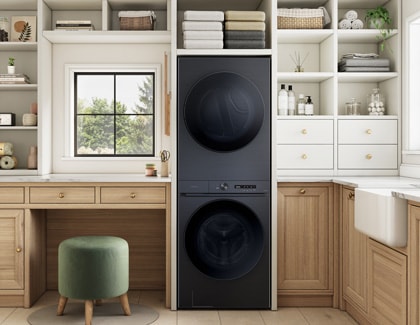
Before you start setting up your Laundry Hub, consider these safety tips and precautions:
- It’s best to have a friend assist with unpacking.
- Keep the Laundry Hub upright at all times.
- Remove all packaging materials before installation.
- Ensure installation on a solid, flat surface away from direct sunlight and heat sources.

Get your laundry room, closet, or utility room ready for the Laundry Hub. Here’s what to consider as you prepare the space:
- Measure to ensure the Laundry Hub fits without obstructing doors or passageways.
- Choose a firm, level surface. Avoid carpeting or slippery floors to prevent movement and unbalanced loads.
- Maintain an ambient temperature above freezing (32°F).
- Ensure sufficient space for ventilation, wiring, water supply hoses, drain hose, and free door movement.
- Consider a drip pan if installing above the ground floor. You can find drip pans at local home improvement and hardware stores.
Included with your Laundry Hub: Wrench, bolt caps, hose guide, cable tie, anti-slip pads.
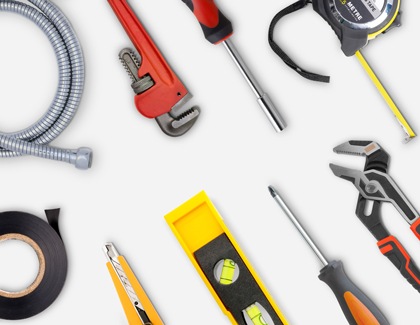
Additionally, you will need: Water hoses, pliers, cutting knife, nut screwdriver, Phillips screwdriver, level, duct tape, measuring tape, pipe wrench (for gas models), LPG-safe compound or Teflon tape (for gas models).
After unpacking the Laundry Hub, you must remove the shipping bolts:
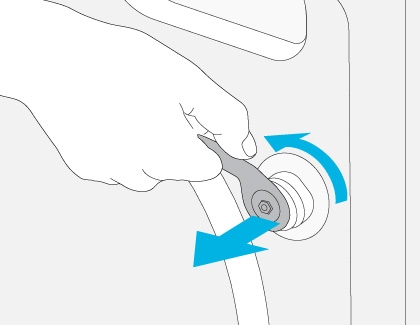
Note: Save the shipping bolts and spacers for future use if you plan to relocate your Laundry Hub.
Ensure a secure and leak-free connection for your water supply hoses:

Note: Always use new hoses with rubber gaskets inside the couplings to prevent leaks. Keep the old hoses as backups or properly dispose of them.
Properly installing the drain hose is crucial to prevent water leaks and ensure efficient operation. There are two installation methods to choose from, depending on your setup:
- Install in a standpipe or sink: Place the hose in a standpipe, laundry tub, or utility sink. Ensure the fixture is between 18 inches and 96 inches from the floor. Use the supplied hose guide to maintain a bend in the spout, securing it with zip ties to prevent kinks.
- Install over a wash basin edge: Position the drain hose at a height of 24 to 35 inches from the floor using the plastic hose guide. Attach the guide to the wall with a hook for stable drainage.

Additional installation considerations
- Depth of insertion: Insert the drain hose 6 to 8 inches into the standpipe, ensuring the connection is not airtight to prevent pressure issues.
- Consider drain height: Installing the hose above 96 inches may decrease draining efficiency and could cause odors as water remains in the system.
- Avoid low installation: If the hose is below 39 inches, it may trigger a siphoning effect, potentially causing the washer to display a 4C error code due to water draining back into cycles.
Proper leveling is crucial for optimal operation and to prevent excessive vibrations or noise during use:

This step involves connecting your Laundry Hub to the power supply. Choose the instructions relevant to your model type and always refer to your user manual for specific details.
Gas models
Electric models
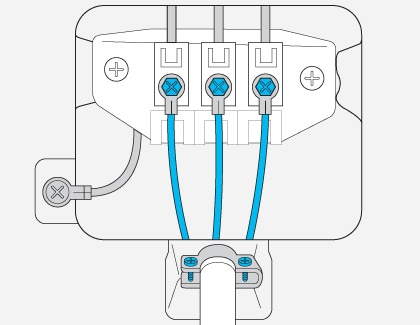
Now that you've installed the Laundry Hub, it's time to calibrate it and perform a test cycle to verify functionality:
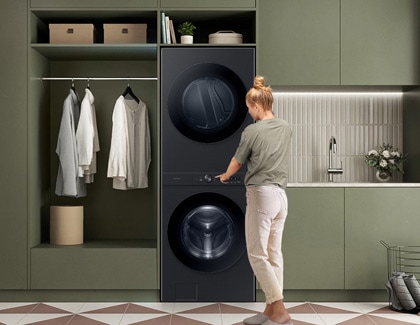
Note: Calibration mode applies exclusively to the washing machine function.
Note: The Start/Pause button functions differently for the washer and dryer—use the upper button for the dryer and the lower button for the washer.
Thank you for your feedback!
Please answer all questions.
The coding for Contact US > Call > View more function. And this text is only displayed on the editor page, please do not delet this component from Support Home. Thank you
_JPG$)